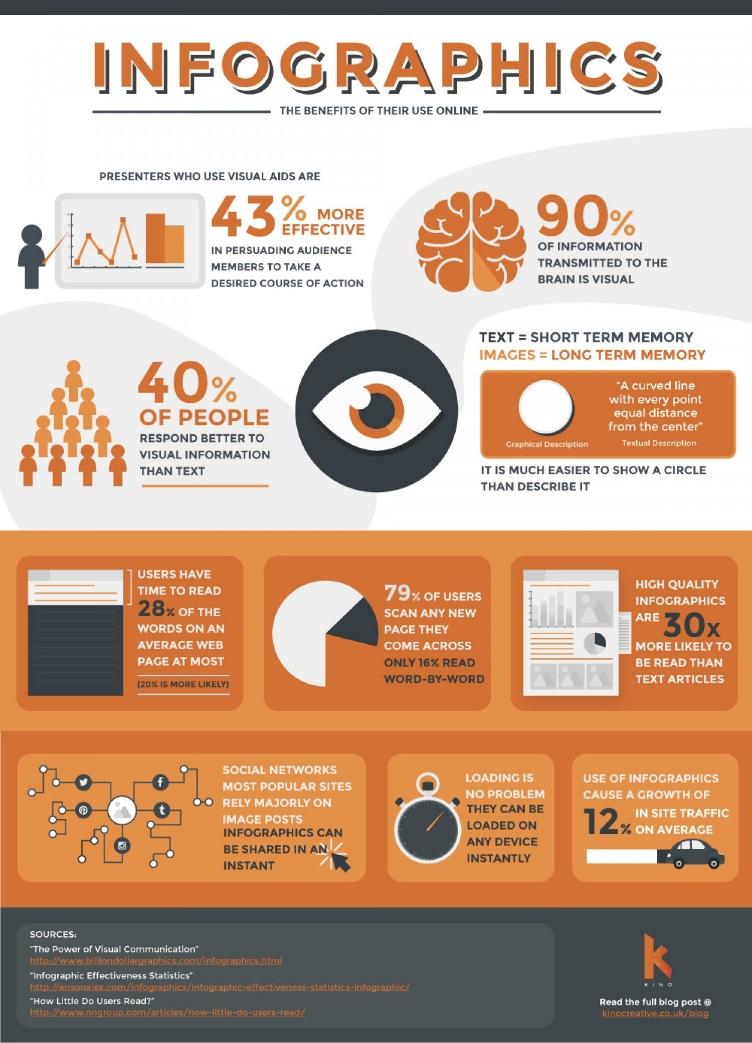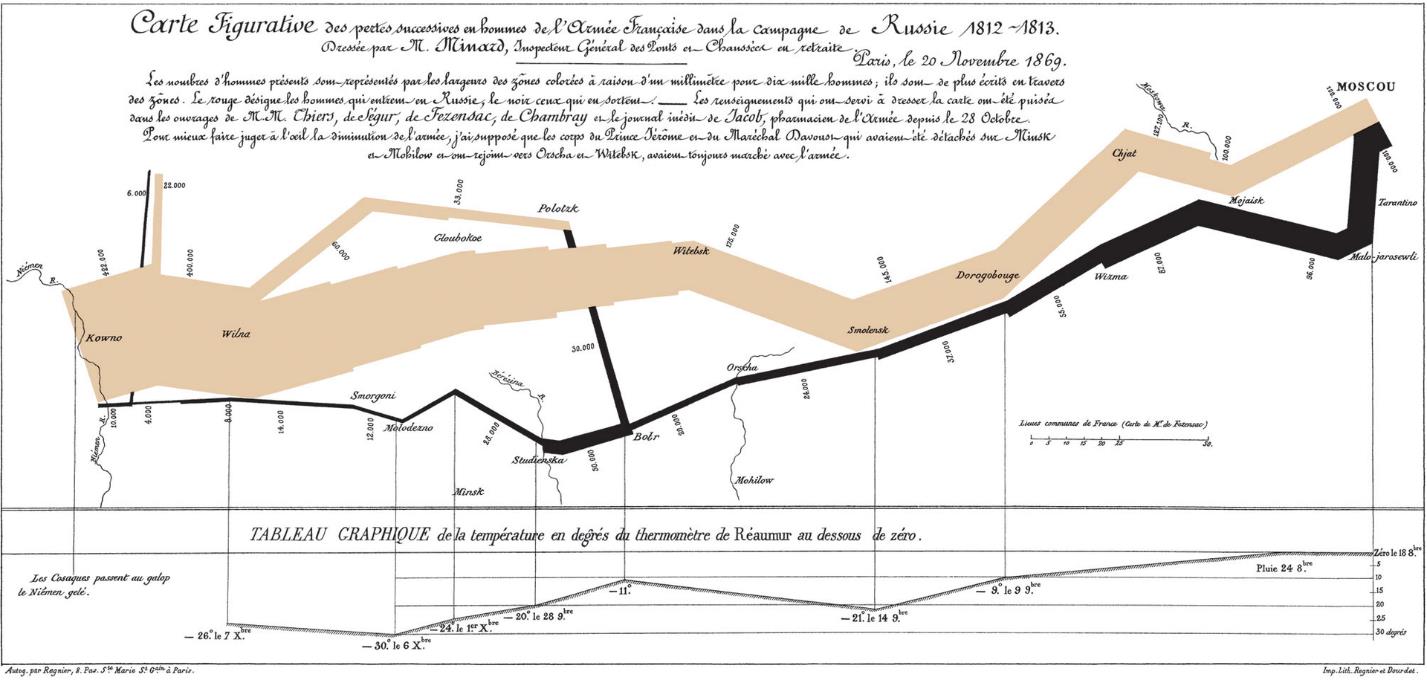Main Menu

The word “infographic” may have become an umbrella term for describing poster products that visually show some amount of quantifiable data. However, infographics and info-posters are very different visual knowledge products. How do we distinguish the two?
It all comes down to the type of data.
Infographics prioritize quantifiable values and convert them into complex data visualizations.
Info-posters are much more subjective and usually prioritize qualities and storytelling over quantifiable data.
Infographics and info-posters differ in design and purpose. The easiest way to demonstrate this difference is to compare an infographic to an info-poster:

In the info-poster above, numbers are displayed but are not the driving force behind the poster. The story (in this case, about the benefits of the use of infographics online) is the driving force, and the numbers are used to support the telling of this story. The percentages and data visualizations are simple and easy to comprehend. However, there is no additional level of engagement. Most of the information on this info-poster can be absorbed in approximately ten seconds.
Takeaways (Source: understandinggraphics.com) :
Info-posters may have some data, such as simple pie charts or percentages, but the data does not serve as “the star.” Some key features include:
On the other hand, infographics are designed to engage the audience more deeply, which is why they can be a useful tool for knowledge translation. Take a look at the infographic below:

The example above is considered to be one of the best infographics of all time. It depicts Napoleon’s invasion of Russia, where 422,000 soldiers left France and 10,000 returned. It offers four different “levels” of data:
The audience need not understand French in order to grasp this infographic. The numbers come together to form a complex data visualization. From that data, a narrative emerges. The narrative is not subjective, and the viewer can draw several conclusions.
Takeaways (Source: understandinggraphics.com)
An infographic is a visual representation of information, data or knowledge and some key features include:
How do you decide which type of product to use?
It will depend on the type of knowledge, the context and the audience, among other factors. Multiple data sets can be translated into an infographic, whereas, if the aim is to communicate a pre-defined message that is accentuated by data, an info-poster is likely the better option.
While info-posters and infographics may seem similar, the primary focus of each is vastly different. Infographics make the story of the data the primary focus and allow the audience to derive a narrative, while info-posters prioritize a pre-determined storytelling message with data as a support system.
If you want to learn more about infographics and other visual knowledge products, our friends at Knowledge Nudge have provided some great tips!
Until next time!
Let us know how you want to stay connected


 News + Events
News + Events

 Patient Partner Research Opportunities
Patient Partner Research Opportunities

 I agree to receive occasional emails from AbSPORU.
I agree to receive occasional emails from AbSPORU.University of Calgary Foothills Campus
3330 Hospital Dr NW
Calgary, AB T2N 4N1
University of Alberta North Campus
Edmonton Clinic Health Academy (ECHA)
11405 87 Ave NW
Edmonton, AB T6G 1C9
The Alberta SPOR SUPPORT Unit operates on and acknowledges the lands that are the traditional and ancestral territory of many peoples, presently subject to Treaties 6, 7, and 8. Namely: the Blackfoot Confederacy – Kainai, Piikani, and Siksika – the Cree, Dene, Saulteaux, Nakota Sioux, Stoney Nakoda, and the Tsuu T’ina Nation and the Métis People of Alberta. This includes the Métis Settlements and the Métis Nation of Alberta. We acknowledge the many First Nations, Métis and Inuit who have lived in and cared for these lands for generations. We make this acknowledgment as a reaffirmation of our shared commitment towards reconciliation, and as part of AbSPORU’s mandate towards fostering health system transformation.
© 2025 AbSPORU